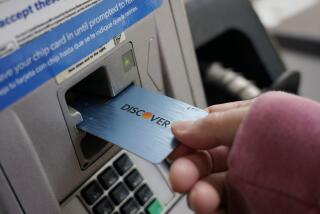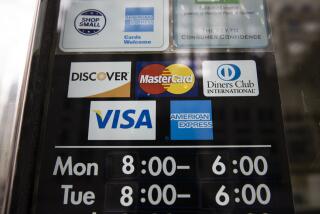Consumers cut borrowing
- Share via
Borrowing by U.S. households declined in October by the largest amount in more than a decade, as demand for auto loans cooled from the previous month, a Federal Reserve report Thursday showed.
In another report, the Labor Department said fewer workers filed first-time applications for jobless benefits, retreating from a 13-month high. Jobless claims last week fell 34,000 to 324,000. Still, the four-week average, a less volatile measure, is the highest since May.
Consumer credit, or non-mortgage loans to individuals, fell $1.24 billion, the biggest monthly decline since 1992, to $2.38 trillion, the Fed announced. Credit fell at an annual rate of 0.6% after rising 2% in September.
Non-revolving debt, such as auto and mobile home loans, fell $4.16 billion for the month, the biggest decline since October 1991, after rising $516 million a month earlier. Revolving debt, such as credit cards, rose $2.92 billion in October after climbing $3.47 billion in September, according to the Fed’s statistics.
“Car and light-truck sales were weaker in October and dealers pulled the favorable financing they had provided their customers this summer when gasoline prices were high,” said Chris Rupkey, senior financial economist at Bank of Tokyo- Mitsubishi UFJ Ltd. in New York.
More to Read
Inside the business of entertainment
The Wide Shot brings you news, analysis and insights on everything from streaming wars to production — and what it all means for the future.
You may occasionally receive promotional content from the Los Angeles Times.










